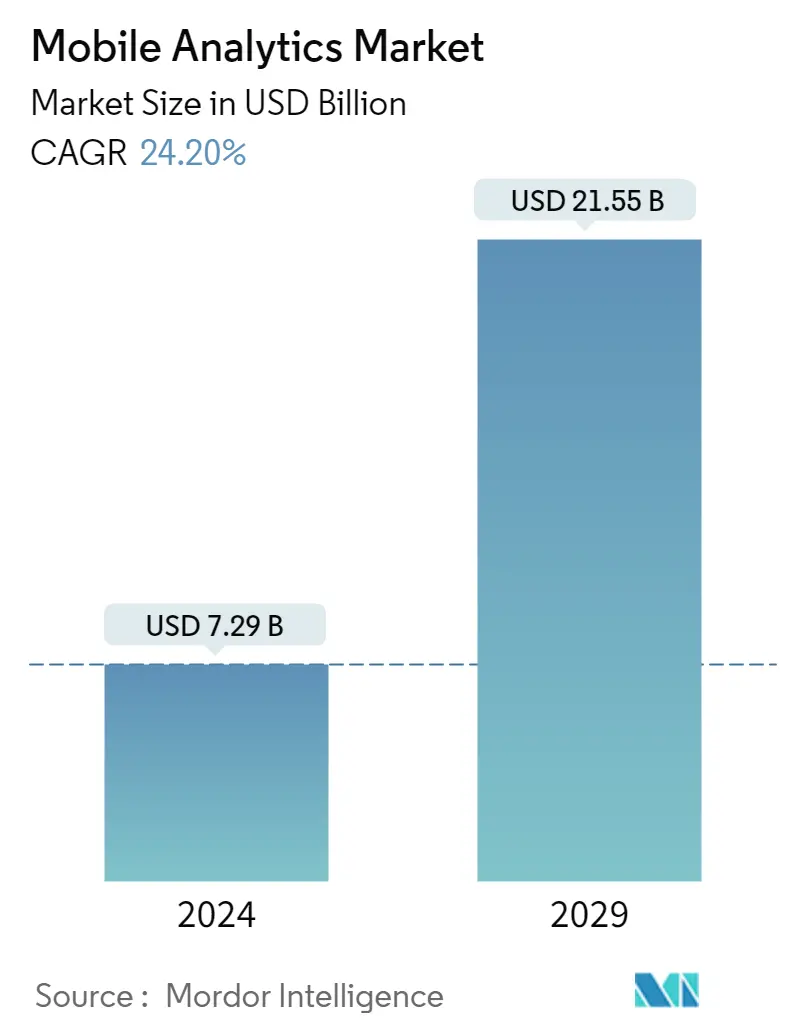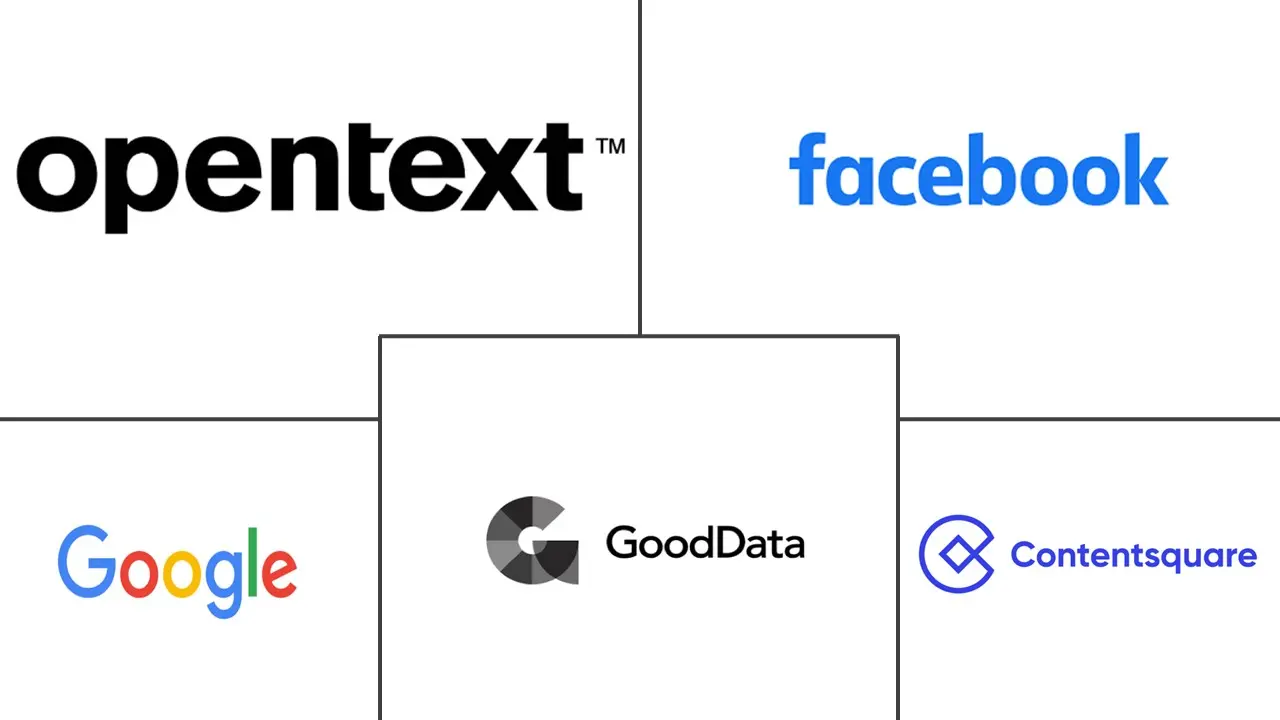Market Size of Mobile Analytics Industry

| Study Period | 2019 - 2029 |
| Market Size (2024) | USD 7.29 Billion |
| Market Size (2029) | USD 21.55 Billion |
| CAGR (2024 - 2029) | 24.20 % |
| Fastest Growing Market | Asia Pacific |
| Largest Market | North America |
Major Players
*Disclaimer: Major Players sorted in no particular order |
Need a report that reflects how COVID-19 has impacted this market and its growth?
Mobile Analytics Market Analysis
The Mobile Analytics Market size is estimated at USD 7.29 billion in 2024, and is expected to reach USD 21.55 billion by 2029, growing at a CAGR of 24.20% during the forecast period (2024-2029).
The main factor driving the market is the adoption of innovative technologies like artificial intelligence, big data, and machine learning by several mobile analytics businesses.
- Mobile apps are now more frequently used by consumers to do daily tasks. These applications use a huge amount of data. A powerful analytics system is needed to manage and analyze this enormous amount of data effectively. In this context, data analytics is quite important. It helps diverse businesses use these apps to gain data-driven insight. Mobile App Analytics is to monitor activity within mobile applications. This research can reveal how users interact with a program and whether a specific incident led users to uninstall it. Tracking interaction, technical data, conversion funnels, and other metrics can also assist in determining whether an app makes sense for both the audience and the business and can direct its future development.
- ITU predictions nearly 5.3 billion people or about 66% of the global population - were utilizing the Internet last year. With enhanced Artificial Intelligence (AI) and machine learning models, mobile analytics solutions, including app analytics, are becoming smarter. The majority of app management metrics are evolving beyond simply presenting information to incorporate data analytics modeling and dashboarding. Google is utilizing Firebase to reinvent analytics for mobile devices. Notifications, attribution, invitations, storage, deep links, AdMob, and AdWords are all packed together to give companies and consumers the greatest insights. For example, Google Analytics and Microsoft Clarity have developed app analytics assistants for corporate leaders to uncover fascinating insights without the need for data mining.
- Product and marketing teams can create positive feedback loops with mobile analytics data. As they update their site or app, launch campaigns, and release new features, they can test the impact of these changes on their audience. Based on how audiences respond, teams can make further changes that yield even more data and lead to more testing. This creates a virtuous cycle that polishes the product. Mobile analytics, which depends on apps, is far more convenient and accurate than traditional web-based analytics platforms. As most mobile analytics tools use an SDK to track user activity, vendors can use various codes to track custom events, depending on the operating system.
- Unlike web analytics, SDKs do not depend on cookies to uniquely identify a user. Hence, compared to several other approaches, mobile analytics will likely generate more accurate results. Also, mobile phones are responsible for most internet traffic globally compared to general desktop usage.
- However, mobile analytics businesses still need to address data security problems. Due to sensitive data breaches, app analytics firms lost a large number of users and income. Some pirates break into user accounts in order to steal important information from legitimate users. These credentials are sold, and users' sensitive data is transferred using peer-to-peer file-sharing protocols or a VPN. Injection attacks, Denial of Service (DoS) assaults, and virus attacks pose data security threats by allowing access to data management software and putting data confidentiality at risk.
- The COVID-19 pandemic impacted multiple sectors, including mobile marketing and advertising. In the short term, companies have curtailed their marketing spending till the situation stabilizes. However, in the future, the shift of advertising budget from traditional marketing like print and outdoor activities to digital and mobile marketing would witness a spike, with end-users being indoors and preferring to consume content primarily on their mobile phones or TV. Social distancing, thus positively impacting the usage of mobile marketing analytics.

